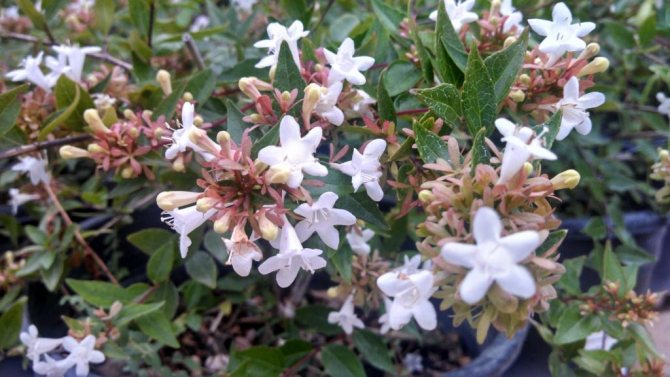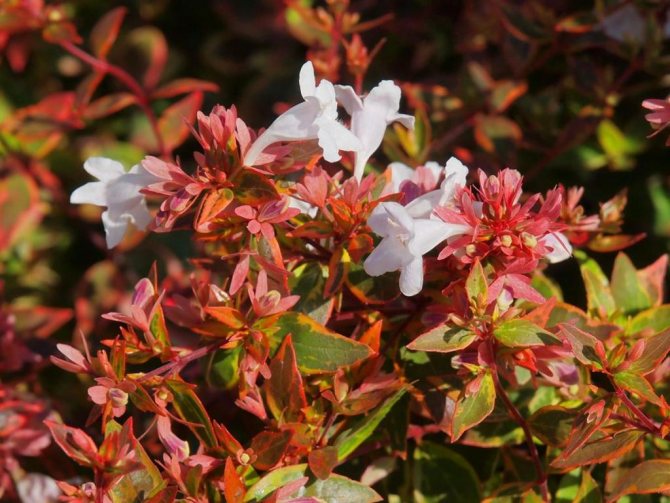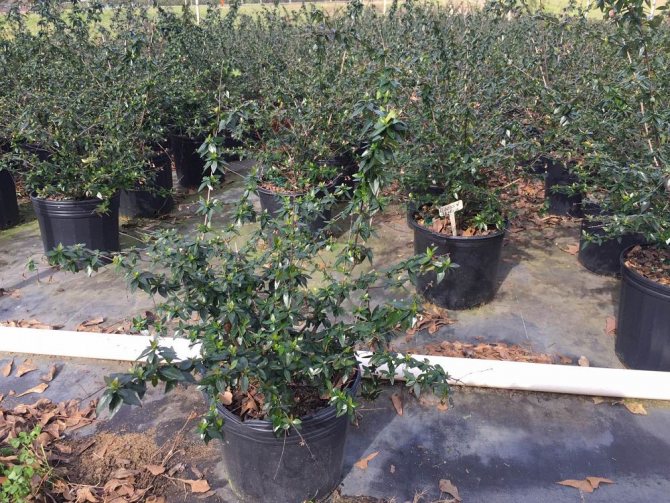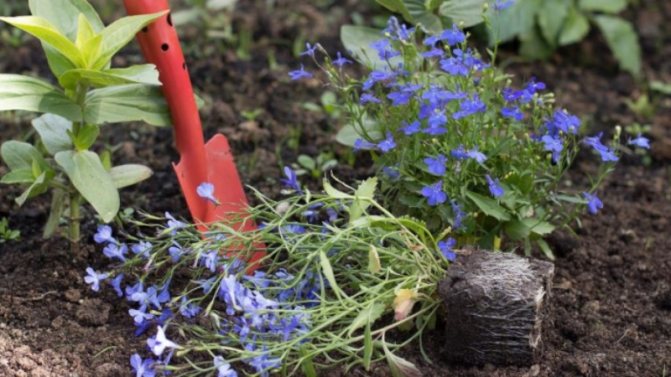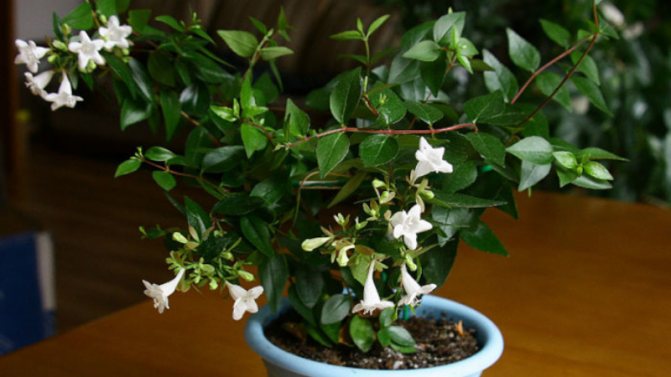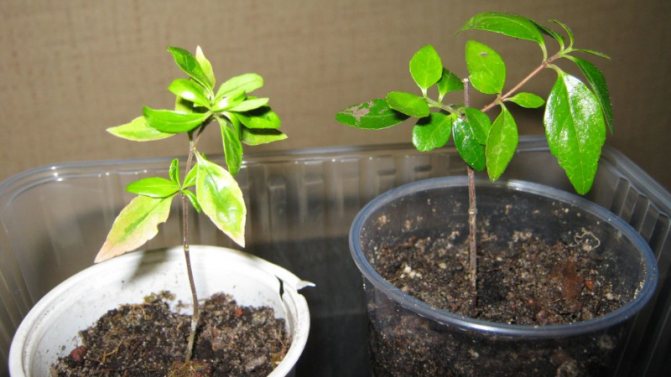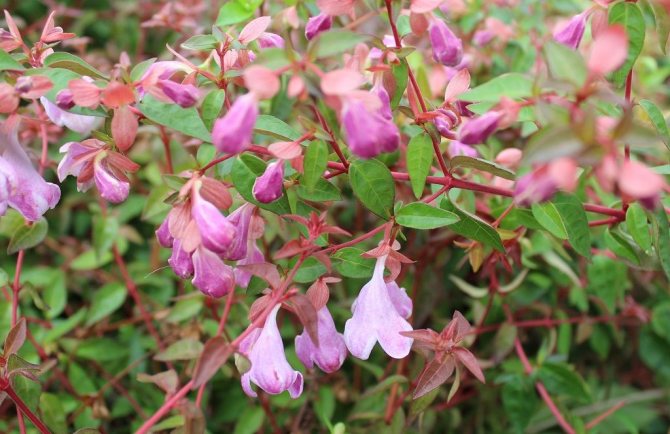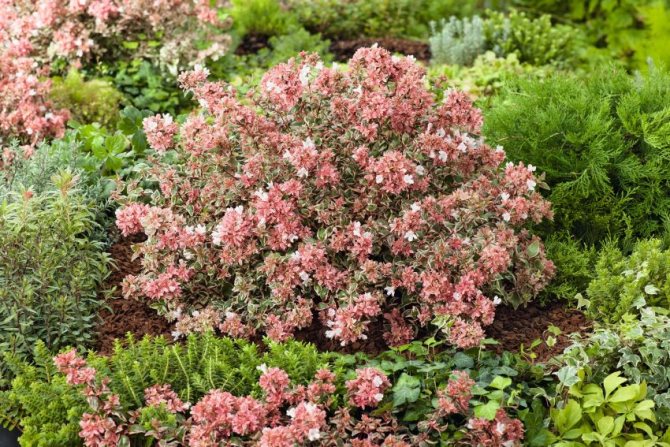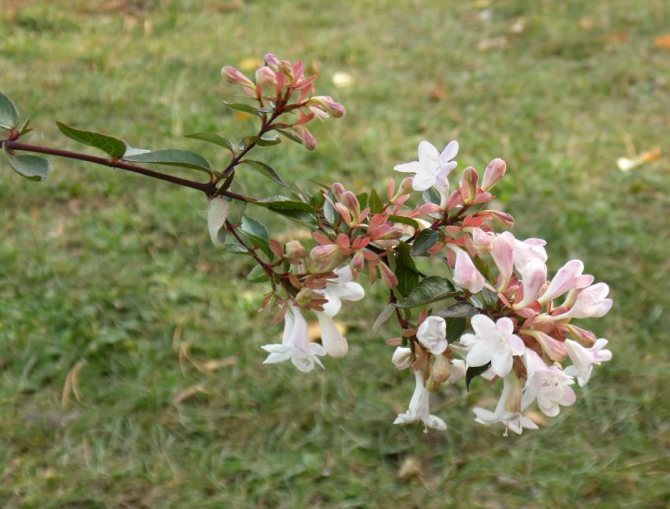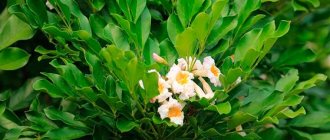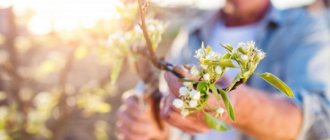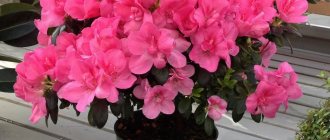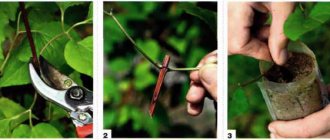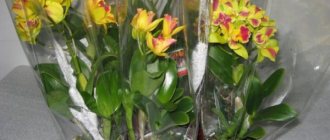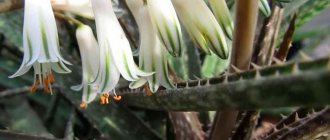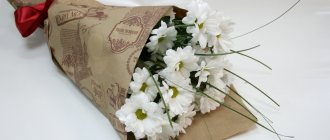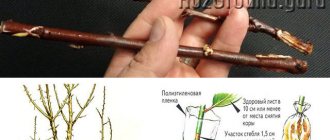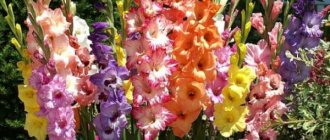Abelia reproduction
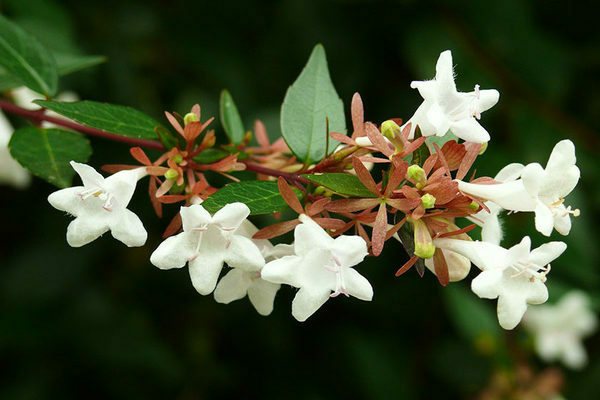
The main direction of reproduction is cuttings, both young and more mature shoots are suitable for such a process, about 15 cm long, the whole process takes place in the summer. The choice is stopped both in the first month and in the last. The most optimal temperature for this does not exceed +20, but it should not drop more than +10 degrees. Young shoots must be covered with a glass device, just glass. In doing so, you create even moisture. Place the container with a young seedling in a warm place where there is no direct sunlight. The engraftment process itself lasts up to about 5 weeks, but not every stalk is able to take root. It very often happens that the plant forms root suckers, the separation of such is possible when the latter have already developed an independent root system. The offspring should be deposited in a separate container.
When time does not rush you and you have enough patience to observe the most complete breeding cycle, planting with seed is possible. Sow seeds in early spring, the soil needs to be loose, nutritious enough and moisture should be normal. Seeds should only be used fresh and of good quality. After the appearance of the first leaves, make a pick. Seed-propagated plants have the ability to flower in the first season after planting.
Reproduction
Abelia large-flowered can reproduce both by seeds and cuttings. With the first option, sowing is done in January. It is important to ensure that the plantings are regularly watered and ventilated. The seeds sprout quickly enough. After the appearance of the first true leaves, the seedlings dive. The flowering of the plant can be observed already in the same year.
When propagating by cuttings, the shoots remaining after pruning are used, cut from the apical branches, about 5 cm long. First, the cuttings must be rooted, for which they are placed in a substrate consisting of peat, perlite and sand. In this case, the temperature should be maintained at about 25 ⁰С. Rooted cuttings after about 2-3 weeks are planted in small pots filled with a mixture of garden soil, peat and sand, taken in equal amounts. After the root system completely encircles the soil ball, the plant is transferred to a more spacious pots. Flowering occurs most often only in the third year, but sometimes the large-flowered Abelia can please with its beauty even earlier. Propagation by cuttings is the most commonly used method of planting this shrub by gardeners.
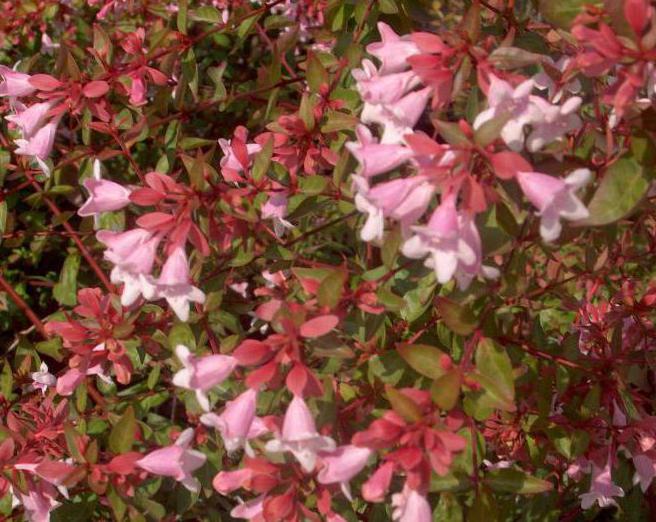

Pests and diseases
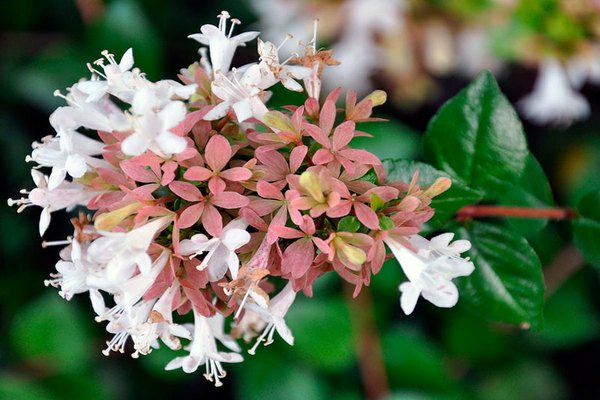

This type of shrub can attack various diseases and pests in the event that the rules for planting and caring for the plant have been violated. Spot, Anthracnose, various root rot.
- powdery mildew - the main reason for the development of the disease is when a cool temperature prevails in a room with a plant for a long period, and the necessary air movement is impaired. Another reason for decay is excessive, not systematic watering. As soon as the first signs of the presence of the disease are found, urgently take action. Any antifungal drug purchased from a specialty store will do;
- the home variety of Abelia blooms very poorly, or even does not bloom at all, due to lack of lighting;
- when there is a sharp drop in temperature, abundant foliage may fall;
- chlorosis is a disease that spreads and infects a plant when grown in soil with high acidity. The bush is rapidly beginning to lag behind in development.
The main pests of Abelia are: thrips, aphids, scale insects, spider mites. For the fight, it is possible to use not only strong drugs from the store, it is possible just to carry out more frequent preventive work on processing with weak solutions that will not harm humans, and the plant will not suffer.
Diseases and pests
Abelia most often suffers from such pests and diseases:
- Aphids, infecting the plant, leave sticky spots. Fight it with water with tangerine skins, and if the pest has spread too much, then go to the store for stronger remedies.
- Thrips affects foliage and flowers, distorting them. If you find traces of the parasite, carefully examine the plants and those standing next to it, since thrips spread easily. Fight with them should be actelik.
- The spider mite appears mainly in droughts and feeds on the sap of your plants, causing the foliage to turn yellow and dry out. This parasite is excreted with acaricides.
- If you find small insects on the bush, as if covered with a shell, then your flower has hit one of the scale insects. These parasites damage the leaves and stems of plants. To prevent this from happening, from time to time, inspect the sinuses and the back of the leaves, as these are the most delicious parts of the plant for scale insects. If you find an enemy, treat the flower with Aktara.
- Powdery mildew is identified by whitish bloom on foliage. Defeat this fungus with fungicides.
- The shedding of leaves by plants in winter indicates too much temperature drop.
The owners of summer cottages are ready to compete with their neighbors, whose flowers are more beautiful. Many people dream of acquiring a cozy gazebo for relaxation, braided with greenery and surrounded by fragrant bushes. For these purposes, garden abelia is ideal, which will be discussed below.
Abelia growing at home
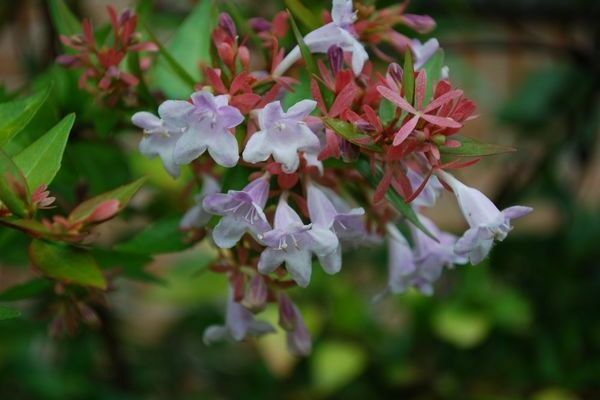

The Abelia plant is not whimsical, but it does not tolerate pruning, after the process the lower part of the crown begins to bare. It is for this reason that experienced gardeners recommend cutting only sick, old, most weakened shoots. Pruning can be done in early spring, but it is necessary to take into account the presence of active buds under the cut of the shoot. A young shoot is formed from the bud and it is he who is able to please with the most abundant flowering already in this season. Anti-aging pruning is performed for older bushes. To clarify again, any houseplant should be carefully processed, especially when it comes to pruning. The instrument must be used only sufficiently sharpened and sterile processed. What is it for? A blunt instrument can wound the trunk, causing damage to the plant and possible disease. Sterility is necessary to exclude infection of this plant if you have previously treated a diseased culture.
The bush needs good ventilation, so it has a positive attitude towards fresh air and warm temperatures in summer. When moving to an open area, provide a small shelter for the plant from heavy rainfall and direct sunlight. Also, exclude the flower from being in a strong draft. You can summarize for home cultivation. The bush is unpretentious in care, but do not break the basic rules, and any changes in temperature and other conditions, accustom the plant gradually, no abrupt actions. The bush will not tolerate this and your efforts may be canceled out.At the time of the onset of a cool night temperature, it is better to bring the plant indoors. Be sure to treat with septic tanks, in case pests appear.
One more moment! Abelia does not like being near any heating device at all.
Growing conditions
When choosing a place to place this shrub, one should take into account what conditions are necessary for its optimal development. Plants in containers or pots are best placed in a conservatory or greenhouse for the winter. The shrub can also overwinter outdoors when the winter is mild enough. Well covered in autumn, it easily tolerates temperatures up to 9 ° C below zero. If it happens that the frost picks up the branches, in the spring these damaged shoots are removed. The most suitable temperature regime for this plant in winter is from 10 to 15 ⁰С.
Abelia large-flowered prefers to grow in areas well-lit by the sun. But it must be protected from the scorching rays of the day. They can dry out the plant and cause leaf burns. Sunlight is most suitable in the morning and evening hours. In shaded areas, this plant practically does not develop. Its growth is too slow, there is no flowering, and the leaves gradually turn pale, becoming almost yellow.
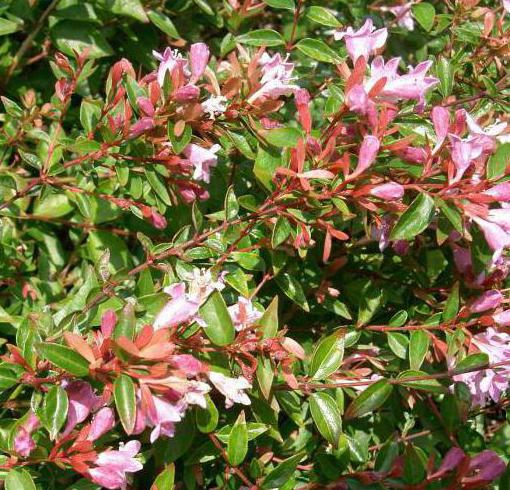

Light, slightly acidic soils with a pH of 6.0–6.5 are preferred. They must be rich in organic matter.
Abelia care
As mentioned above, the bush is unpretentious to growing conditions, and the composition of the soil has no peculiarities, but again the standard must be adhered to. Abelia reacts positively to slightly increased acidity in the soil, but not an overabundance. The soil in the pot should be well-drained. There are, of course, some varieties when the plant feels great in the heavy clay composition of the soil, but it is worth adhering to the recommendations. The best option would be a mixture: peat + turf mixture + foliage + humus and sand. A slightly acidic pH can be maintained by adding a small amount of chopped pine bark and needles.
Relative to the temperature of the content in room conditions. During the summer period, the temperature should be up to +20 degrees. In winter, the thermometer should drop to +14, not lower. If wintering is a little warmer, this will not adversely affect the plant.
Necessary lighting. We have already mentioned Abelia's addiction to a lot of sunlight. There is, of course, the option of growing in partial shade, but it is better to stick to the needs of the plant itself. No direct rays, detrimental to the development of the plant, especially during the daytime during spring and summer.
How and with what to properly feed the room Abelia? Top dressing must be done twice a month, in the spring and in the summer season. It is during this period that the most active development takes place.In the period of winter dormancy, it is worth stopping various types of nutrition. It is necessary to give the plant the opportunity to recover its strength for active and healthy development for the next season.
Flowering period of indoor abelia
The duration of active flowering of Abelia is quite a long period, from mid-May to the last decade of November. This is a very positive quality of the plant. A great choice for decorating or simply decorating your room. The bush is able to delight you with excellent, beautiful flowering for almost half a year.
Transfer. Watering. Spraying.
The dry air of the dwelling will not become the reason for the poor development, flowering of this plant. Abelia is perfectly able to do without spraying. The only thing that is necessary is the complete absence of a cold draft, but a sufficiently high-quality airing is very necessary for the flower.
Any indoor plant requires a sufficient amount of moisture.In the spring and summer, watering is necessary more often, but regularly and abundantly. By winter dormancy, gradually reduce the amount of watering and water for one watering. By winter, watering should be very rare. Regular, timely watering is especially necessary for young, actively developing plants. Because the root system of these bushes is actively developing and a sufficient amount of moisture is needed. Already rooted bushes are adapted to mild drought.
Why do you need a transplant into the renewed soil and how to do it correctly? It is recommended to transplant only once a year, in spring, when development is only activated, the plant wakes up after winter dormancy. With an increase in the pot, a rapid growth of the root system of the abelia occurs and the further simple of the bush. The volume of the container fills up very quickly. At the time of transplanting, carefully inspect the roots of the plant, if necessary, trim damaged or more sluggish roots. The container should have good drainage holes. With the growth of the plant, the volume of the pot increases annually.
Care rules
In summer, Abelia large-flowered needs frequent and abundant watering, especially in the stage of active growth. In addition, it is recommended to regularly spray the leaves. This plant is seasonal and requires rest in the autumn-winter period. Therefore, with the end of summer, the frequency of watering is reduced to a minimum. To humidify the air, you can put a tray of water next to it. The shrub that remains outside for the winter is also stopped watering immediately after the leaves fall.
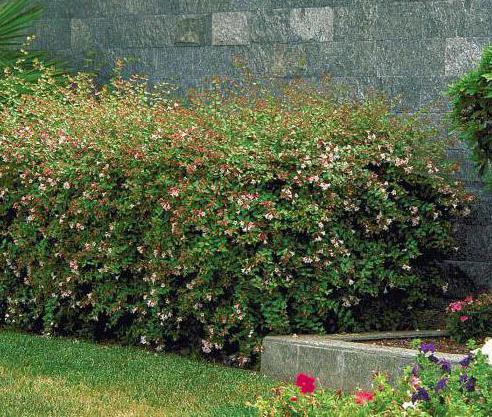

Good growth and abundant flowering will delight the large-flowered Abelia every summer, which is cared for with all the requirements. One of them is the timely feeding of the plant. The shrub prefers substrates rich in organic matter, which means that in the spring it is necessary to add mullein, compost, humus or a solution of bird droppings to the soil. As soon as daylight hours begin to increase (in March-April), they begin to feed the abelia wintering indoors, while increasing the frequency of watering and the amplitude of the temperature regime. Organic and mineral fertilizers, alternating, are applied 2 times a month in the recommended concentration.
Abelia large-flowered, the description of which is given above, is growing at a fairly rapid pace. During the season, it can almost double in size. To give the crown a certain shape, the shoots are cut off. When growing an ampelous plant, pruning can be omitted. The right time for this procedure is the end of winter. To make the bush look more magnificent, pruning is performed immediately after flowering.
Plant application
This plant is actively used both for single planting and for group decoration of rooms, premises, borders. When using the ampola design, they are grown in pots, the contemplation of an outstretched bush and drooping branches is formed. When grown in temperate climates, the plant has a great outdoor winter. However, planting should be done in a sufficiently deep manner. There are varieties when cultivation takes place in hanging baskets. As a result, to preserve the elegance of the plant, prune selectively, only outdated and weaker shoots. Any plant becomes more sluggish with age, the lower part of the stems is bare. You just need to replace the ancient bush with a younger plant. You can also say that there are varieties that can calmly overwinter, covered with simple spruce branches and fallen leaves. Such varieties grow mainly in the middle lane.
Pests
Among pests, special harm can be caused by:
- Aphid... If the leaves of the plant curl, and the tips of the shoots are sticky and die off, this means that the plant has been affected by aphids.In this case, it is necessary to wash the shoots with soap, treat with an insecticide.
- Spider mite... If the leaves are in light dots, they die off and a thin cobweb is visible on them - this is the work of a spider mite. Rinse the plant with cool water as often as possible. Of the preparations, you can use fitoverm, neoron, sulfur.
- Thrips. Leaves with yellow dots, die off, and black dots on the bottom of the leaf, then this is a defeat by thrips. In the fight against them, special tapes are used - traps. You can spray the plant with an insecticide (fitoverm, actellik). If necessary, the procedure can be carried out repeatedly.
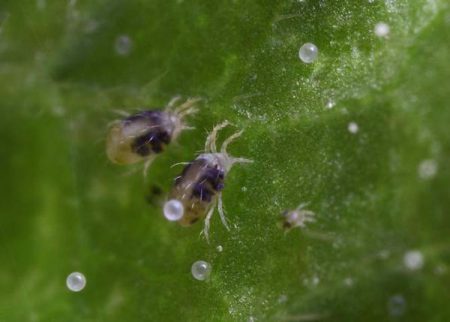

Spider mite
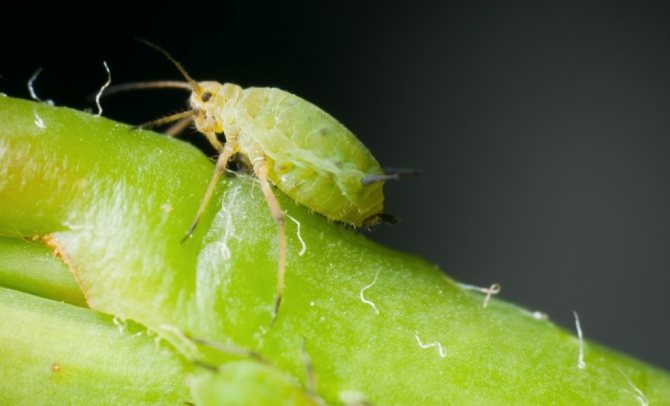

Aphid


Thrips
A mature plant will be very large and take up quite a bit of space. The flower is also grown as an ampelous one, then it will take up much less space.
Abelia: varieties
Schumann's variety - a bush capable of reaching a height of up to 2 meters, flowers are tubular in shape, endowed with a lilac color with a pink tint. Blooms in early June and until October pleases with abundant flowering. The buds of this bush have a very pronounced, pleasant aroma that bewitches everyone who is nearby. The fruit of the variety is small enough, leathery in composition and contains only one seed;
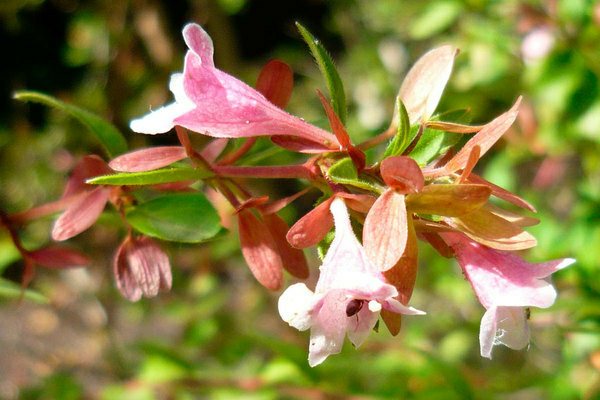

Grandiflora, or simply - Abelia large-flowered, is a sprawling, multi-stemmed, round-shaped shrub. The branches bend very gracefully. The leaves are ovoid, opposite, dark green in color. The inflorescences resemble bells or the tubular form of flowers, painted white with a pink tint. From the beginning of May to the last days of September, there is a continuous, abundant flowering. The bush can grow up to 180 centimeters. It is at the top of the shoot that a panicle-inflorescence is formed, consisting of white, small, very fragrant flowers;
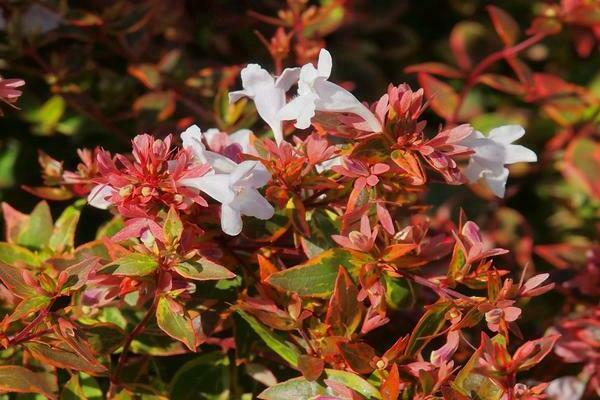

Korean Abelia - in the wild, it grows preferably in rocky areas, in the vicinity of other shrubs in the forests of Korea. The period from germination to a full-fledged bush is quite long, slow, but the bush can grow up to 250 centimeters. The shape of the leaves is elongated, ovoid, does not exceed 6 cm in size and up to 35 mm in width. Tubular inflorescences, each flower is very small, no more than 2 centimeters. The flowering period is not as long as that of congeners, only a month, from the beginning of June;
Chinese Abelia is a deciduous shrub, attractively multi-stemmed, with a long flowering. The main period of active color is from mid-July to almost September inclusive. On young shoots, though a short, but very dense pubescence is located. Mostly green leaves. At the edges, the leaf plates are slightly serrated. Flowers of white color and attractive aroma are tubular in shape, bracts are endowed with a pink tint, small flowers are collected in an umbrella inflorescence. This variety is distinguished by the most abundant flowering, sometimes the branches even bent downward under the resulting weight of flowers;
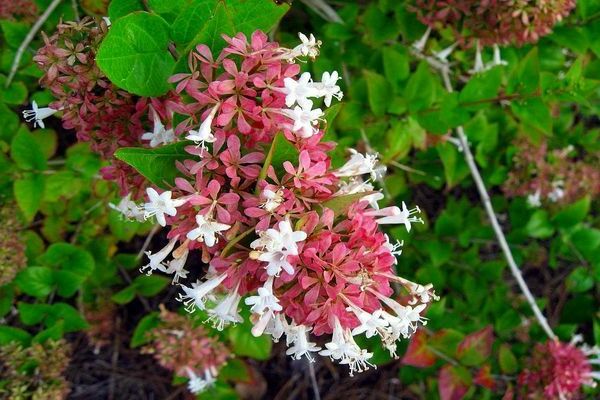

The Kaleidoscope variety is a relatively recently bred Abelia species, which belongs to large-flowered varieties. What is the varietal feature? A wide range of color of the leaf cover prevails. Younger, spring leaves are painted in light green shades, gradually the color changes to a more pronounced, darker one, in the summer season the shade of the foliage becomes yellow, with a golden tint. In the fall, the leaves turn into a fairly bright, purple outfit. In the center, the color of the leaf is always darker than the main tone, in particular brown. White, slightly pink flowers of a very large size and a fascinating aroma;
Shield abelia. The bush grows small. Lush crown, slightly rounded, forms many thin and rather flexible shoots in itself. The leaves are dark, green in color, with jagged edges. White or pink inflorescences, wonderful aroma;
Edward Gucher's cultivar - the varietal feature is the duration of flowering and the bright color of the flowers. The inflorescences are mostly pink, but you can also observe the presence of burgundy tones. Young foliage is colored brown with a copper sheen. According to the degree of maturity, it turns into a dark green color, which, in turn, turns into bronze tones for the autumn period;
Mosan Abelia - in this variety, flowering begins relatively early. The aroma has jasmine notes, the color of the flowers is pink, green foliage. Another feature of this variety is good frost resistance.
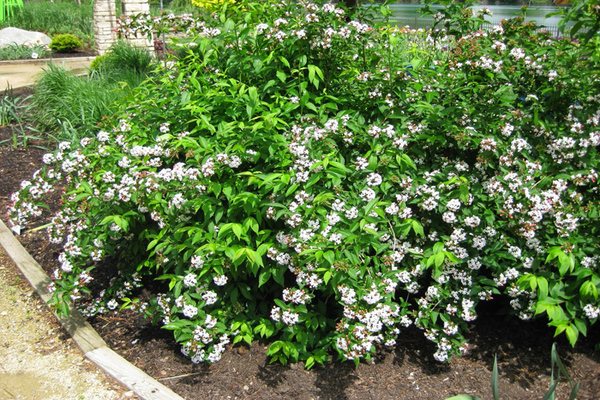

Description of the plant
The abelia shrub belongs to the Honeysuckle family, subfamily Linnaeus. The homeland of the shrub is East Asia and Mexico.
The plant, depending on the variety, is both deciduous and evergreen. The average height of the shrub ranges from 1.5 to 2.5 meters, subject to ideal keeping conditions, it can reach 6 meters.
The leaves are oval in shape with a pointed end, are located on the shoot in pairs. Crown color - dark green, shiny. The shape of the flowers is different for each variety. They can be tubular, bell-shaped or funnel-shaped, always consisting of five petals. Size - from small to extra large. The color scheme is all shades of pink, red and purple, but there are also absolutely white flowers. Peduncles are always located at the tips of the shoots.
All inflorescences, regardless of the variety, have a pronounced pleasant smell.
After the end of flowering, the leaves fall off the tips of the branches (along with the peduncles). In their place, bright red sepals appear, which remain on the bush until the first frost.
Outcome
As a result, we will emphasize several secrets of successful abelia cultivation:
- The temperature in summer does not exceed +25 degrees, in winter it is not lower than +14;
- Regarding lighting, sunlight should be enough, but without direct rays;
- It is good to moisturize the watering process and the humidity in the substrate, especially during the growing season. In the spring, we take into account the temperature in the growing room;
- Pruning should be very minimal, even just sanitary, and only in the spring;
- The growing soil is a little sour, if not, then add coniferous composition;
- It is necessary to feed abelia during the active growing season, organic matter or minerals;
- It can be propagated in spring and summer, by cuttings or using seed.
So. A little effort and you become the owner of a beautiful, unpretentious plant.
Types and varieties
The genus Abelia has about 30 varieties and species, most of which grow in natural conditions.
1 species is used as a houseplant - Abelia Large-flowered.
Abelia grandiflorum
Another name is Grandiflora. A hybrid form that includes several varieties that differ in the shade of inflorescences. The leaves are dark green with a glossy sheen. During the winter months, their hue changes to a bronze-red. The flowers are very large - up to 6 cm in diameter.
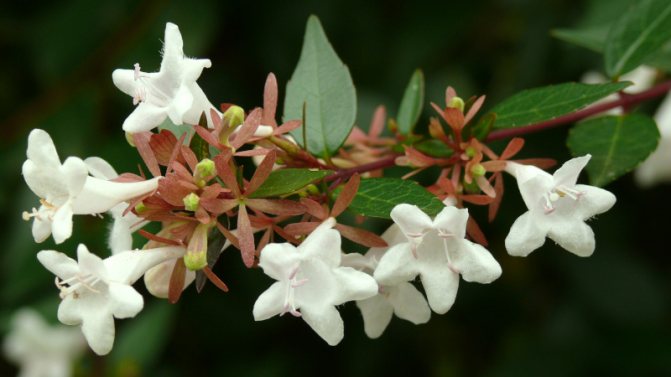

Abelia chinese
The species is distinguished by an abundance of flowers in the inflorescences. Their shade can be any: from pale pink to deep red. The leaves are medium-sized, dark green with a slight burgundy tint.
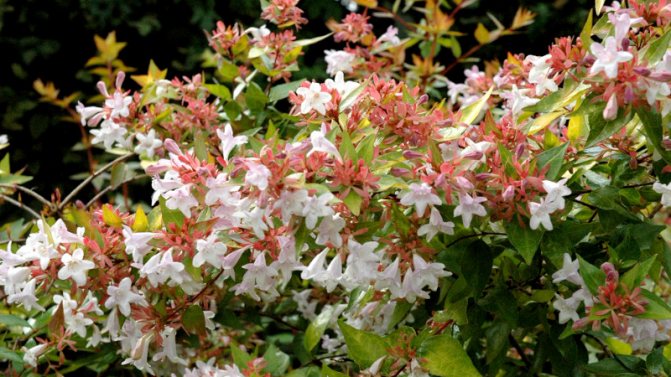

Abelia blooming
A species that is suitable for growing not only outdoors, but also in a greenhouse. Blooms profusely from early May to late September. Peduncles are large (up to 4 cm), deep pink in color. Broad, glossy leaves are located on the downward shoots.
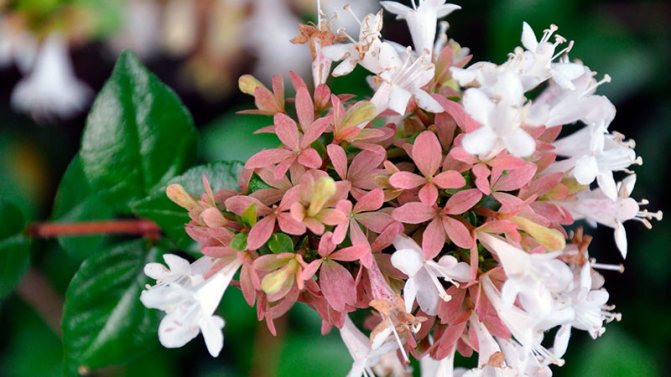

Abelia three-flowered
Another name is Abelia Himalayan. A graceful and delicate shrub. The leaves are small, leathery, rich green. Peduncles - white, or all shades of pink.
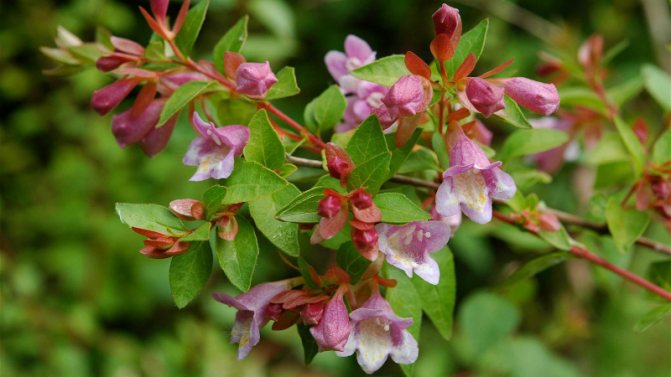

Abelia Schumann
Deciduous species. The bush is small and looks graceful.Leaves are oval, matte, dark green. Flowers are pink, lilac or white.
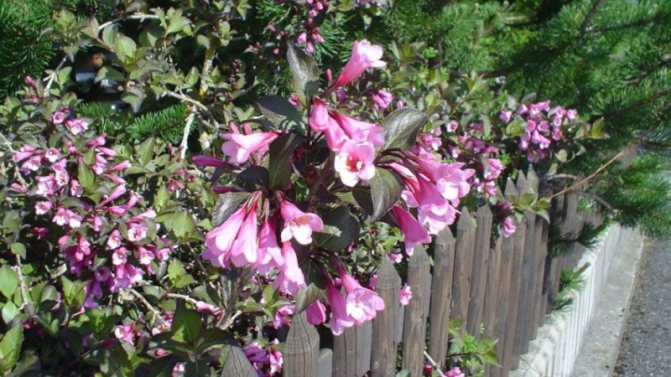

Main types
Abelia grandiflora (Abelia x grandiflora)
This hybrid shrub is semi-evergreen (moisture and temperature dependent). When grown at home, Abelia of this most common species has long, thin, drooping shoots. It is noteworthy that while the plant is young, its shoots have a light pink tint. Opposite small leaves, have an oblong shape, pointed upwards. These shiny leaves are colored dark green. Fragrant, fairly large axillary flowers are five-petalled, accrete. The flowers collected in the inflorescence of the brush are painted white. Flowering is very long and abundant.
The most popular varieties:
About
Add a comment
Brief instructions for care and maintenance
| Growing | Good lighting, room temperature (+20 .. 25 degrees), protection from drafts, direct sunlight. |
| Humidity | Spraying, water pan, water containers around the pot. |
| Top dressing and pruning | Top dressing once every two weeks during the growing season, pruning shoots. |
| Flowering period | Blooms in May or June, flowering duration is several months, depending on the type of plant. |
| Landing, transplanting | Weakly acidic soil, clay, loamy soil, earthen mixture. Small bushes are transplanted up to three times per summer, large ones - once every two to three years. |
| Reproduction | The most popular among gardeners is propagation by cuttings, propagation by seeds is possible. |
| Pests | Aphids, thrips, spider mites, scale insects. |
| Diseases | Powdery mildew. |
Landing in the ground, transplanting
Abelia requires slightly acidic soil. It is a rather delicate plant. Therefore, it cannot be planted in alkaline soil, because there may not be enough nutrients for the plant. This leads to yellowing of the foliage. For a shrub, clay or loamy soil is ideal. They are highly fertile. You can also use an earthen mixture as a soil. For this, deciduous soil, humus and sand are mixed. They must be taken in equal proportions.
Small varieties are transplanted up to three times during the summer. Large massive shrubs are transplanted once every two to three years.

